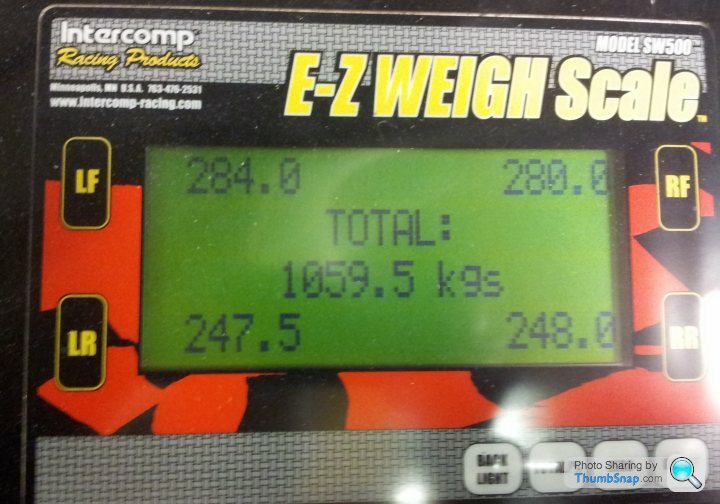Suspension motion ratio and corner weights T350
Discussion
Suspension set up seems to be a hot topic at the moment. I have been talking to Simon at Cornering Force to see what he would recommend and he has asked for the following info:
1. Suspension motion ratios. Ie the rate the wheel moves relative to the spring.
2. Typical weight distribution front to back.
Can anyone shed light?
Thanks
1. Suspension motion ratios. Ie the rate the wheel moves relative to the spring.
2. Typical weight distribution front to back.
Can anyone shed light?
Thanks
Thanks Steve. The weight distribution just needs to be close to reality given that cars will vary in spec.
The motion ratio is simply the ratio of how far a wheel moves relative to the spring. Ie a wheel might move up by 10cm yet the spring may only shorten in length by 8cm as the spring is further down the suspension arm to the point of axis. Simples!
The motion ratio is simply the ratio of how far a wheel moves relative to the spring. Ie a wheel might move up by 10cm yet the spring may only shorten in length by 8cm as the spring is further down the suspension arm to the point of axis. Simples!
I am looking to replace the Harvey bailey dampers with Bilsteins or go for Nitrons valve'd for road use. However I am concerned that the Nitrons springs are too stiff at 400 and 325. Ohlins can be spec'd with 325 and 250 and standard springs are 200 and 225 (rear tuscan 2).
A chassis engineer is assessing the spring rates for me based on the weight of the car and the spring rate that the wheels see. I know many people are very happy with Nitrons an others find the springs too firm. I prefer a supple ride but don't want to bottom out on soft springs and therefore I am just want to do a bit of research first.
A chassis engineer is assessing the spring rates for me based on the weight of the car and the spring rate that the wheels see. I know many people are very happy with Nitrons an others find the springs too firm. I prefer a supple ride but don't want to bottom out on soft springs and therefore I am just want to do a bit of research first.
Edited by Hedgetrimmer on Tuesday 7th October 21:04
m4tti said:
Wouldn't it ultimately depend on the spring used as to how far the wheel can travel vertically. Rock hard springs result in little travel.
Why doesnt he measure it himself before and after.
Why doesnt he measure it himself before and after.
The ratio doesn't change as the wheel and spring should move at the same ratio. Ie the suspension arms will still follow the same arc. A stiffer spring will simply reduce the ability of the wheel to move. Ie the spring compresses less and the wheel moves a smaller distance.
It is useful to know the ratio in choosing the spring rate as a ratio closer to one means more force is required to compress the spring for a given wheel movement. Therefore a softer spring can be used. Dampers also play a part obviously in reducing the springs ability to move.
m4tti said:
But if there's a mathematical formula to calculate it and it isn't affected by variables such as spring stiffness why doesn't he calculate it taking the car as a blank canvas.
He is 100 miles away and I haven't got the time to mess about going back and forth. I was hoping that someone might know the motion ratio anyway which would save the hassle. I could probably do it myself by measuring the spring length for a given wheel movement.Gassing Station | Tamora, T350 & Sagaris | Top of Page | What's New | My Stuff




